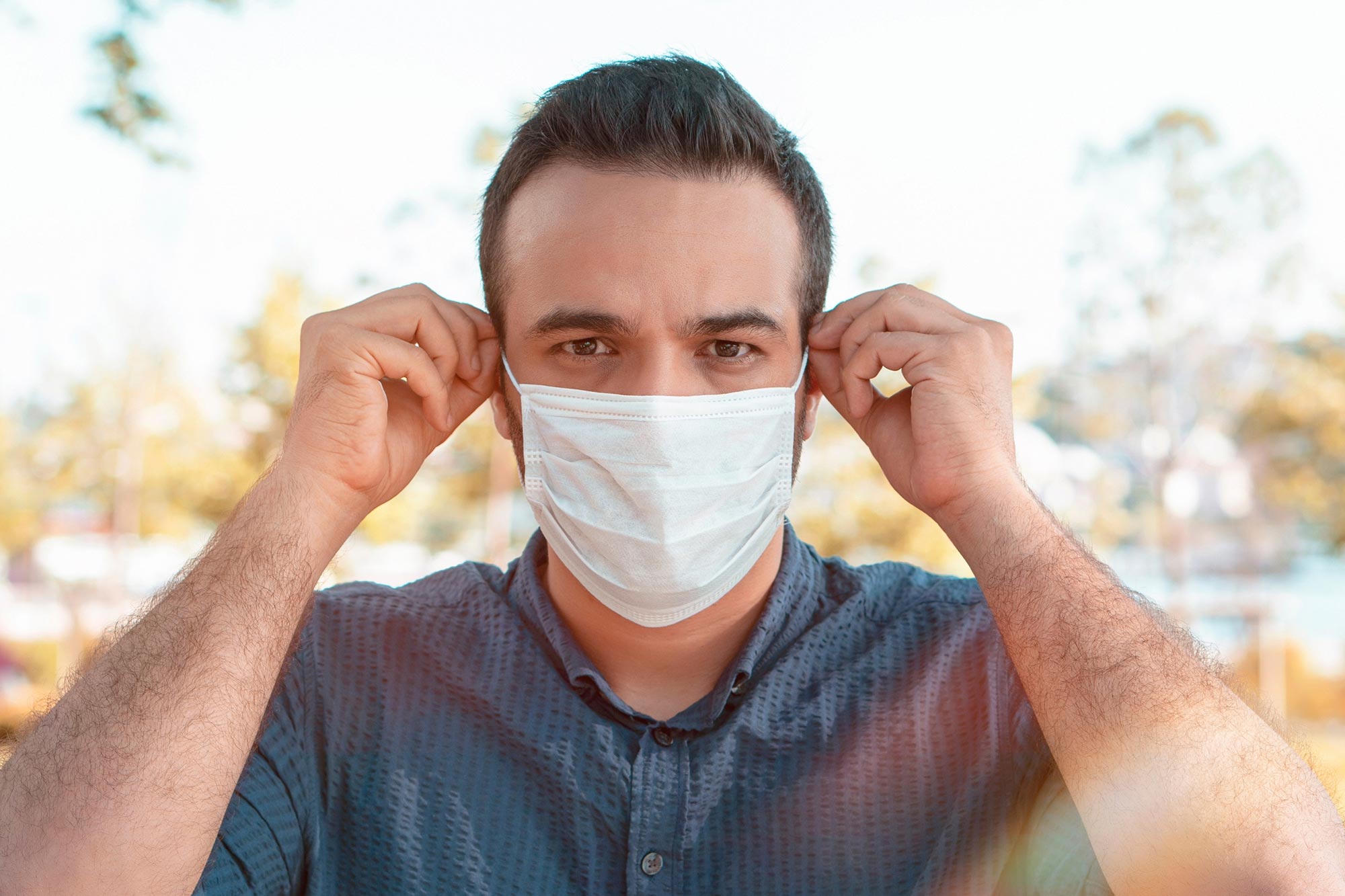Research from the University of East Anglia reveals that wearing face masks did not significantly reduce Covid-19 infection risk following the initial Omicron surge. The study analyzed changes in infection risk factors as the pandemic evolved, noting that factors like mask usage, household size, and occupational exposure varied in significance over time. Funded by the National Institute for Health and Care Research, the study emphasizes the need for adaptable risk management strategies and further research to understand these dynamics.
A new study indicates that face masks did not significantly lower Covid-19 infection risk after the initial Omicron wave, highlighting the need for adaptable strategies and further research as risk factors evolve.
New findings from the University of East Anglia suggest that wearing face masks did not reduce the risk of Covid infection after the initial rise of the Omicron variant. An analysis of official data indicated that the risk factors for infection changed notably when the dominant Covid variant in the UK shifted from Delta to Omicron in December 2021.
These included wearing a mask, a history of foreign travel, household size, whether people were working or retired, and contact with children or over-70s.
Lead author Professor Paul Hunter, of Norwich Medical School at the University of East Anglia (UEA), said: “Early in the pandemic there were many studies published looking at risk factors for catching Covid, but far fewer studies after the first year or so. Our research shows that there were changes in some risk factors around the time that the Omicron BA.2 variant became dominant.”
Co-author Dr. Julii Brainard, of UEA’s Norwich Medical School, said: “This isn’t totally surprising because laboratory evidence suggests that the Omicron variant was better able to infect the cells lining the upper respiratory tract than previous variants and so be more transmissible. Management of infection risk needs to be agile, adapting to epidemic development and better-quality information when it emerges. To prevent infections we need to have a good view of which factors might be most or least relevant. If those factors can change, we need to be alert to that happening.”
Methodology and Key Findings from the Data
The researchers analyzed data available from the Office for National Statistics (ONS) Covid survey in England, which compared infection rates with an ongoing household survey of the population to estimate how many people had infections. From November 2021 to May 2022, the ONS also asked people questions about their circumstances and habits to see if those factors could be linked to the risk of positivity.
Professor Hunter added: “We used this dataset to look for constancy or change in the importance and direction of potential risk factors for testing positive. We applied a statistical method called meta-regression to do this.”
The study found that changes to risk factors included:
- In November 2021, always wearing face masks at work, school, or in enclosed spaces was associated with a reduced risk of being infected in both adults and children, but after the first Omicron wave, it was not.
- Living in a house with five or more people was a risk at the beginning but by the end of the study period, people in larger households (four and above) had negligibly greater risk than people living in singleton households.
- Early overseas travel was not associated with increased risk, but later on, it was.
- Working in health or social care or in contact with others, was often found to be important in the first year of the pandemic, but was not associated with an overall higher or changing risk of infection in the study period.
- Being of ethnic minority was strongly associated with increased risk in the first few months of the UK epidemic, but was associated with lower risk and no significant trend change during the study’s full monitoring period.
- Being retired was associated with reduced risk compared to those in work overall, but any protective effect had disappeared by February 27, 2022, which coincided with the start of the second Omicron wave.
- By the end of February 2022, it became apparent that there was a decrease in risk for adults living with children aged 16 or under.
- People under 70 who lived with someone aged 70 or older initially had a lower likelihood of testing positive, but this protective effect diminished by about mid-February, 2022.
The researchers said the balance of evidence is that wearing face coverings reduces transmission of respiratory infections in community settings and reduces transmission of Covid-19. The question, however, is by how much.
Conclusion and Implications for Future Research
A systematic review of pre-pandemic evidence and analysis of original survey data during the COVID-19 pandemic both indicated that mask-wearing could or did reduce transmission of SARS-CoV-2 by about 19pc. But these conclusions were derived mainly from data prior to the emergence of Omicron variants.
This latest research found that prior to Omicron BA.2, never wearing a mask was associated with an increased risk of around 30pc in adults and 10pc in children. But by the second Omicron wave (mid to late February 2022 onwards) there was no protective effect from mask-wearing in adults and possibly an increased risk of infection in children.
Professor Paul Hunter commented: “It should not be a surprise that risk factors change during a pandemic due to a highly infectious disease with a short duration of immunity like Covid. So-called SEIRS (Susceptible, Exposed, Infected, Recovered, Susceptible) models of epidemics predict that as such an infection becomes endemic risk factors that powered the epidemic in its early stages become less important and the rate at which people lose immunity becomes more important in driving infection rates.”
Dr Brainard added: “A lot of potential risk factors for catching Covid didn’t change during this period, and that’s important to know too. We offer some possible explanations for why the changes may have happened, but we would need more focused research to understand for sure why there were changes in some risk factors.”
Reference: “Changing risk factors for developing SARS-CoV-2 infection from Delta to Omicron” by Paul R. Hunter and Julii Brainard, 15 May 2024, PLOS ONE.
DOI: 10.1371/journal.pone.0299714
The study was funded by the National Institute for Health and Care Research (NIHR) Health Protection Research Unit in Emergency Preparedness and Response at King’s College London in partnership with the UK Health Security Agency (UKHSA) and in collaboration with the University of East Anglia.

Sarah Carter is a health and wellness expert residing in the UK. With a background in healthcare, she offers evidence-based advice on fitness, nutrition, and mental well-being, promoting healthier living for readers.







